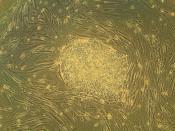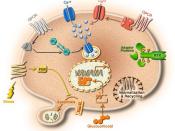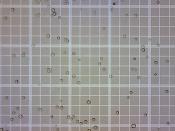MODEL DRUGS ACROSS 2/4/A1 INTESTINAL
EPITHELIAL CELL MONOLAYERS
SUMMARY
Investigations of the integrity and transport characteristics of 2/4/A1 cells have been done in this report. The cell line was isolated from rat fetal intestinal epithelial cells and transfected with thermolabile SV40 large T antigen.
These cells proliferated at 33 ðC, but eliminated the antigen and ceased proliferating at a non-permissive temperature (39ðC). At 39ðC 2/4/A1 cells started to differentiate but simultaneously the cells also underwent massive cell death.
When cultured at 37ðC these cells formed confluent and tight monolayers that seemed to have paracellular transport characteristics similar to that of the human intestine.
Transmission electron microscopy confirmed the development of multilayers at 33ðC, monolayers at 37ðC and defects in the cell layer due to apoptosis at 39ðC.
Different immunostainings of ZO-1, E-cadherin and vinculin confirmed formation of tight and adherence junctions. Transepithelial resistance reached a plateau of 25-35 Ohm.cm2, which was similar to the small intestine.
In transport studies 2/4/A1 cell line monolayers selectively restricted the permeation of hydrophilic permeability markers proportional to molecular weight and discriminated more accurately between the molecules of intermediate molecular weight compared to Caco-2 cells.
These results indicated that 2/4/A1 cells could be used as a model for hydrophilic drug absorption.
INTRODUCTION
The small intestine plays a crucial role in the absorption of drugs and nutrients. Exogenous substances cross a series of barriers during the process of intestinal absorption: (1) the aqueous boundary/mucus layer, (2) a single layer of epithelial cells, and (3) the lamina propria, which contains the blood and lymph vessels that then transport the absorbed drugs to other parts of the body (Artursson 1991).
The cell monolayer is comprised of two parallel barriers: the cell membrane and the tight junctions. Most drugs are absorbed by a passive diffusion across the cell membrane...


